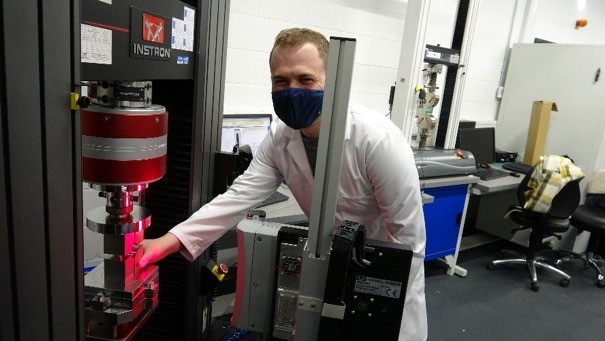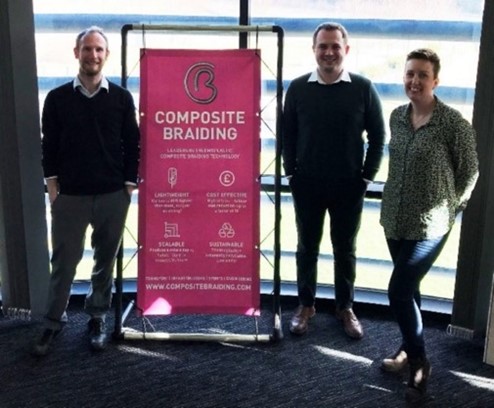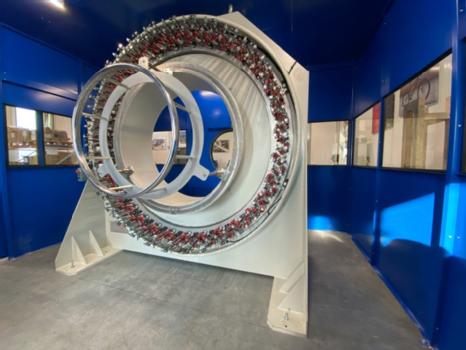Success Story Assetbank
Composite Braiding intern reduces waste, creates new products and more
Composite Braiding manufacture braided parts from composites, a technique that is used across a wide range of industries including rail, automotive, infrastructure and leisure. Although the process is inherently more efficient in comparison to other composite manufacturing processes using prepreg (where material is cut at a specified orientation resulting in unused material being left over), there is still a small amount of waste produced from the start and end of braiding. Historically the material wastage in composites manufacturing is up to 35%, whereas the braiding process usually wastes only around 5%. The team at Composite Braiding were keen to make use of the discontinuous fibre composite parts and wanted to find a way to use their off cuts to also make components. This would provide not only opportunities for different types of product but also a new form of revenue for the business.

Solution
Having worked with WMG previously on energy efficient tooling and antimicrobial grab poles (see here), Composite Braiding approached the SME team to help with this challenge. After discussing what support was needed, WMG placed an intern, Adam Fletcher, with Composite Braiding for 12 weeks to help with reducing waste from the current process.
A recent Coventry Graduate, Adam, was tasked with evaluating the feasibility of whether the off cuts could be used to create additional components. Focusing on the cutting, distributing, moulding and characterisation of this new material and its offcuts to identify if it could be used to create additional new products.
Following the success of his first 12 weeks and the insight he provided Composite Braiding through his observations, they extended his internship for another 12 weeks. This was so he could focus on creating a new prototype.
Throughout his time at Composite Braiding, Adam took part in project management, planning, moulding, thermal characterisation, mechanical testing, part design and tool design. Expanding the product range, as well as the skills on his CV.
In addition to having an intern, WMG supported Composite Braiding by providing access to their state-of-the-art facilities and equipment at the University. This enabled them to strengthen their knowledge on composite manufacturing and material characterization even more.

Impact
The findings resulted in Composite Braiding being able to offer a wider range of products for their customers and has brought them one step closer to their vision of becoming a zero-waste company, demonstrating the potential to reduce production waste to almost zero. The business has received a range of demonstrator plaques and performance data, and shared this new capability with their customers to help share best practice and enhance their product portfolio.
Alastair Barnett, Director and Senior Engineer, commented: “The value of having highly capable, dedicated extra resource provided by WMG and access to WMG’s testing facilities for this work has been very beneficial. We knew there was potential for making useful, attractive, complimentary products from our minimal waste material and Adam’s work has proven this.”

For more information on working with WMG or joining the WMG Internship Programme, please email wmgsme@warwick.ac.uk
